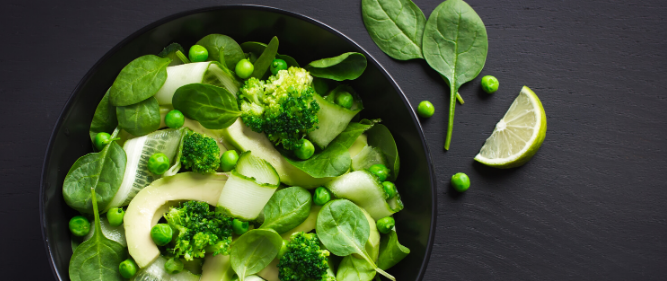The food and beverage industry continues to change rapidly, with 2019 seeing the growth of plant-based foods, health and wellness, and clean label products.
In 2020, conscious consumerism still remains at the core of industry trends. Consumers are factoring both their personal health and the health of the planet into their buying decisions, prioritizing factors like nutrition, convenience and sustainability.
Understanding what consumers are shopping for is imperative for food companies to stay ahead of the curve. That’s why we’ve compiled a list of the top trends that will impact the food industry in the new year.
1. Shifting sugar habits
Limiting sugar intake is predicted to be a major focus for consumers in the new year. More people are realizing the amount of added sugar in their diets, and awareness will likely increase even more with FDA’s new labeling rules that require companies to call out “added sugars” under the carbohydrates section.
Expect a growth in demand for sweet snacks made with reduced sugar or artificial sweeteners. The number of “not-so-simple” sugar alternatives will also grow, according to Whole Foods. This may include syrupy reductions from sources like monk fruit, pomegranates and coconut, as well as all-natural, zero-calorie sugar replacements.
2. Expanding plant-based and flexitarian options
2019 was a revolution in plant-based products, with retail sales of plant-based foods increasing by 11.3%, versus just 2% in overall food sales. The “flexitarian diet” encouraged more people to reduce their meat consumption and embrace plant-based protein options. While soy has traditionally led the vegetarian pack, brands will offer more non-allergenic protein options using legumes and vegetables in 2020.
Not to be outdone, meat brands are staying competitive among flexitarian eaters by offering meat-plant blends like burgers with a mix of beef and mushrooms. These options are healthier and more environmentally friendly while also maintaining traditional flavor. Major meat brands like Tyson Foods are now offering blended alternatives.
3. Healthy, on-the-go snacking
“Protein” and “fresh” are the keywords when it comes to snacking in the new decade. The days of granola bars and bags of chips are out. Instead, consumers are looking for high-protein, grab-and-go options that are both nutritious and convenient, such as nutritious puffed snacks, unique twists on the hard-boiled egg, more nut and seed options, and plant-based protein bars.
4. Seeking adventurous alternatives
The interest in new, exotic and healthy foods keeps ramping up. The shelves will be stocked this year with more unique fruit and vegetable flours, nut and seed butters, and dishes from West African cuisine. Culinary adventures won’t be confined to adults either. Millennial parents are introducing their children to a wider variety of foods, and brands are launching products designed to bridge the gap between the traditional kids’ menu and a more sophisticated palate.
5. Alcoholic & non-alcoholic options for the health conscious
Healthy trends aren’t just limited to what people eat. Inventive non-alcoholic beverages are hitting the shelves this year. According to experts from The Fresh Market, new alcohol substitutes will include sparkling hop water brewed like craft beer and enriched waters that deliver the antioxidant benefits of red wine.
For those who want to keep the liquor but reduce calories, lighter alcoholic beverages are also a forecasted trend. A variety of hard seltzers, sodas and even kombucha allow consumers to enjoy alcoholic drinks without the extra sugar and calories.
6. Putting the environment first: traceability, sustainability and waste reduction
In 2020, the pressure is on food companies to not just deliver high-quality products, but also be transparent and sustainable in their processes. Millennials and Gen Z consumers are especially passionate about values like environmental responsibility and will research and buy from brands that match their values.
“We are entering a phase where consumers want to understand the full lifecycle of a food product, from where and how it was grown, why it is better nutritionally and better for the environment,” said Dwight Richmond, Director of Center Store Merchandising at The Fresh Market.
Along with transparency, consumers are interested in food waste reduction. More people are buying pre-portioned meal kits to reduce excess food. According to FoodBev Media, fruits and vegetables represent nearly half of all food waste at 44%. Much of this produce is thrown away because it looks imperfect. We’ve already witnessed the growth of companies like Misfits Market and Imperfect Foods focused on this sector, and we’ll likely see more grocers and online retailers selling odd-shaped produce at lower prices.
7. Food plants increasingly turn to design-build delivery method
As food companies look toward the 2020s, many are planning to build or expand their manufacturing facilities to meet consumer demand for high-quality, healthy and diverse food options. One of the biggest trends in the industry is a shift toward using the design-build delivery method.
Nearly half of all construction projects nationwide now use the design-build method, according to a study from Food Marketing Institute (FMI). Research shows that plant owners who work with an integrated design-build firm are more satisfied with the experience due to increased innovation, cost control and quick speed to market.
Succeeding in today’s rapidly changing food market can seem difficult, but with the right integrated design-build partner, you can quickly ramp up and optimize your manufacturing facility to prosper in the new year and decade.
Are you ready for 2020? What trends are you noticing? Let me know in the comments below or email me at foodforthought@stellar.net



